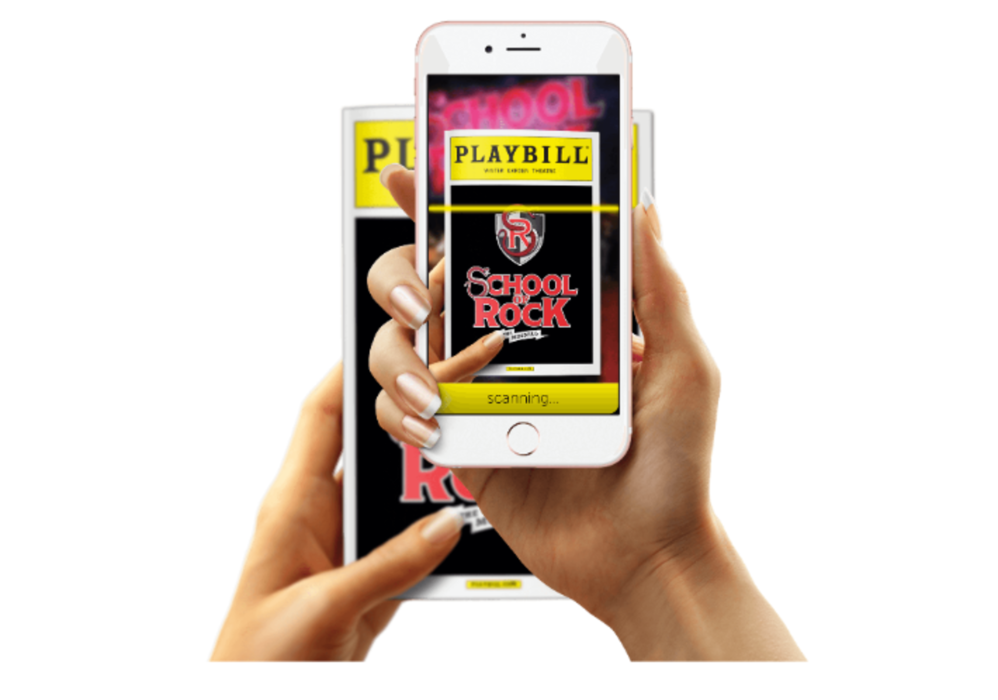Creating rich customer experiences is an art, and directing multiple vendors to get the job done can sometimes cause a lot of drama. Broadway media company Playbill managed to skip the theatrics and work with its industry partners to produce a contextually relevant mobile app experience for its patrons.
Setting the scene
Playbill published its first print magazine in 1884. And while the issues still carry an emotional attachment—many patrons save them as mementos—the company wanted a way to deliver more up-to-the-minute content and enable theatergoers to interact with it pre- and post curtain call.
“The immediacy of the content is really something people want access to,” says Rachel Glickman, Playbill’s chief digital officer, “and there’s only so much that you can do in print.”
But Playbill couldn’t provide this richer experience as a one-man show. So, in April 2015 it broadened its ensemble and hired a range of technology vendors to create a digital complement to Playbill magazine: the Playbill Passport app.
Finding the right cast
Built in partnership with Broadway Voice, a mobile technology company owned and operated by the Mills Agency LLC, the Playbill Passport app provides contextual content before, during, and after patrons’ theatergoing experiences.
Here’s how it works: After consumers download the iOS app from the app store, they’re asked if Playbill can access their location and send them push notifications. Once they opt in to both services, they can sign in through Facebook, Twitter, or continue as a guest. Logging in through Facebook provides Playbill insight into those users’ public profile, friend list, and email address. Similarly, signing in through Twitter grants Playbill access to those users’ public profile and photos. Users can then view which shows are playing, purchase show merchandise, and link to shows’ websites to buy tickets. They can even receive discounts on show parking or hire an Uber driver to get to the show.
Once patrons using the app arrive at the theater, they’ll enter a geofence, which Playbill is able to outline through the use of mobile technology provider Gimbal. The app users’ Wi-Fi, GPS, or cellular signal alerts Gimbal of their arrival. Gimbal then connects to mobile engagement platform provider Urban Airship, triggering a push notification welcoming them to the theater.
Knowing that a patron is inside a theater allows Playbill to deliver a range of relevant experiences—some general; others more personalized. The app provides a darker interface for patrons inside of the theater, so it doesn’t disturb others with its ambient light. Additionally, Playbill sends push notifications reminding users to power down their phone before the show begins so they don’t distract the performers or other attendees. The app also knows not to send push notifications during the show’s run time.
“It would be great if people turned off their phone altogether, but it doesn’t always happen,” Glickman says.
But the experience doesn’t end once the curtain goes up. During intermission, consumers can turn to the app to find the theater’s restroom, water fountain, and concession stand locations. They can also use intermission to view content about the theater’s history and featured show (e.g., information about the plot and cast, fun facts, show times), including exclusive photos and videos they can share with their social networks.
After the show, consumers can use the app to find nearby bars, restaurants, and other attractions, read their ratings and reviews, and book a reservation. Plus, consumers can scan the image of their Playbill magazine and have actors autograph it digitally with their fingertip at the stage door.
Leveraging backstage benefits
In addition to providing value for theatergoers, the app provides benefits for Playbill. One is the ability to cross-promote its other marketing channels. The app features a call-to-action inviting users to sign up for Playbill’s email newsletter, Playbill Club, where they can receive offers to shows, restaurants, and nearby attractions. The app also allows Playbill to collect data on its users, such as how many people have downloaded the app, how long they were in the theater, what shows they saw, and what kind of content they’re viewing. All of this information is stored within the Urban Airship platform.
Anhthu Nguyen, CEO of Broadway Voice, says Playbill aims to eventually use this data to segment and retarget users based on their preferences and behaviors.
“As we gather more information about our user base, we’ll be able to push out interesting things to them,” she says. “If we know they like [the musical] Wicked, [Playbill] may be able to push marketing or push suggestions to them that they may like another show. As they scan their playbills, we can not only learn about what they’ve seen, but we can also learn what they haven’t seen.”
Applauding the results
Playbill officially launched the app on January 4 and promoted it via Playbill magazine, its website, social media, and industry events, including BroadwayCon, where they tested the app. Although it’s early days, the app seems to be gaining traction. For instance, at the time of this interview, Glickman said that Playbill was aiming to generate 24,000 downloads within its first month and that it was “well past the halfway mark on that.” Nguyen also says that Playbill is seeing “tremendous” response from new users signing up for the newsletter.
As for future enhancements, Playbill intends to debut a new Android app and start segmenting and retargeting users in April. The company also intends to introduce new features to help Broadway goers outside of New York book their travel.
Playbill’s initial success shows that even a well-established, print-centric brand can harness today’s technology to captivate its audience.








